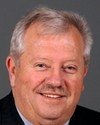The mine was built in 1980-82, and I believe you may have photographs of the mine as it exists today. In 1980-82, $65 million was spent in building the mine, which is a couple of hundred million dollars in today's money. For financial reasons, the mine did not go into production. It was abandoned for a number of years in the 1980s. During this time, the old permits expired and weren't renewed.
When our company acquired the property in the late 1990s, we carried out explorations. The new act came into force in 2000, and we then had to get permits under the new act. Our old permits had lapsed and it was necessary to get new ones, so we went through a process of exploration.
Our first permit was a permit for exploration, our second one was for exploration, our third was for underground development, and the next one was for a road. We had to keep going back for permits at every stage of the process. Each stage of the process required an environmental assessment, and each one took a long time. It took much longer, in our view, than it should have taken, particularly as the mine was already built.
Unfortunately, we got caught in a legislative problem. The new act dealt pretty well with new projects. It dealt fine with projects that already had permits—they kept going. But we fell in the middle—we had a mine already built and no permit. We got bogged down in having to re-permit, and we're still have to re-permit.
Part of it was because of the proximity of our mine to the Nahanni National Park. We got that resolved in June of this year. The mine is not in the park—it is excluded from the park. This has changed the permitting environment. For four or five years, there was a debate about whether it was going to be a mine or a park. At one stage, people wanted to stop the mine and build the park. But finally, as a result of a lot of negotiation and compromise by everybody, including Parks Canada, we got to a good solution. I'm hoping that with this out of the way, with new legislation and settled policy, we will be able to move expeditiously through the remaining parts of the permitting process. But it's still a long process.




